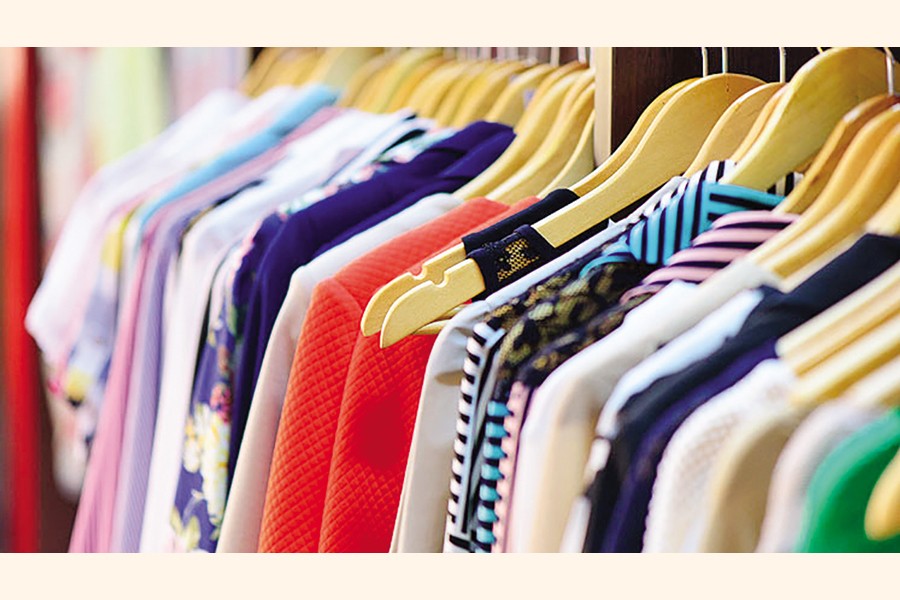
US-based fashion companies rated Bangladesh high as the topmost competitive country in terms of product prices among world's apparel-manufacturing countries, according to a latest report.
While majority of the participants reported to decline sourcing from China, none was willing to do so from Bangladesh.
The report on '2023 Fashion Industry Benchmarking Study' also reveals that the social and labour-compliance risks associated with sourcing from Bangladesh have decreased in the past two years although concerns hang over.
It also highlighted growing social and labour-compliance risks associated with sourcing from China, Vietnam, and Cambodia for their "forced labour", high raw-material sourcing from China and political instability respectively.
Findings of the tenth edition of the survey, jointly conducted by the United States Fashion Industry Association (USFIA) and the University of Delaware, were released Monday.
It surveyed executives from 30 leading fashion brands, retailers, importers, and wholesalers, including some of the largest brands and retailers in the country from April to June 2023.
Respondents rated Bangladesh at 4.5 points-the highest-- out of 5.0 while they rated Vietnam (decreased from 3.8 to 3.5) as less price-competitive as an apparel sourcing base in 2023, according to the findings.
The rate for China, India and Cambodia is 3.5 and Indonesia 4.0, according to the survey.
The improved rating for risk of social and labour-compliance category (2.5 in 2023 vs 2.0 on average between 2019 and 2022) acknowledges the collaborative efforts of various stakeholders to enhance social- responsibility practices in the Bangladeshi garment industry since the Rana Plaza tragedy.
Because of the improved shipping and logistics situation this year and the lifting of COVID restrictions, China has enhanced its speed to market performance from 3.0 to 3.5, Egypt from 2.6 to 3.0 and Vietnam from 2.7 to 3.0.
The rate for Bangladesh in 2023 is 2.0, according to the study.
China and Vietnam have been ranked as most competitive regarding sourcing flexibility and agility (quickly adjusting the delivery, volume, and product of the sourcing order upon customers' requests) this year.
The lifting of COVID restrictions in these two countries has significantly reduced supply-chain disruptions and facilitated the smooth movement of goods.
This year, several suppliers, including Vietnam, Bangladesh, India, Sri Lanka, and CAFTA-DR members, received improved ratings regarding their sourcing flexibility and agility performance.
"Over the past few years, many garment suppliers in Asia have notably taken proactive measures to enhance their adaptability and responsiveness to stay competitive and resilient during the pandemic," the report adds.
Highly consistent with macro trade statistics, Asia remains the dominant sourcing base for respondents. Notably, seven out of the top ten most-utilized sourcing destinations in 2023 are Asia-based, led by China (97 percent), Vietnam (97 percent), Bangladesh (83 percent), and India (76 percent).
Regarding Asia-based suppliers, Vietnam, Bangladesh, and India are among the most popular destinations where respondents plan to increase sourcing over the next two years due to their relatively large-scale production capacity and stable economic and political situation.
Inflation and economic outlook in the USA, managing the issue of forced labour in the supply chain and increasing production or sourcing cost remain the top three concerns for the US fashion industry.
Asked, Bangladesh Garment Manufacturers and Exporters Association (BGMEA) Vice-President Shahidullah Azim said buyers are placing orders here in Bangladesh as it still offers competitive prices otherwise they would go to other destinations.
"Being a labour-intensive industry, apparel makers receive orders at a low rate, in many cases, below their production cost mainly to sustain employment and business," he notes.
Regarding compliance, he said: "Bangladesh now is the most preferable hub because of its workplace-safety compliance."
Talking to the FE, Dr Khondaker Golam Moazzem, research director at the Centre for Policy Dialogue, said it is positive ranking high considering the mass-scale production and low-end consumer bases.
He, however, suggests improving competitiveness in other criteria like speed to market, labour and social compliance not only based on low price as the country will graduate from mid-income to upper-income country.
"So the mindset that Bangladesh will remain cheap or low wages persist should be changed," he said, adding that the strategy should be that Bangladesh has to cater buyers of medium-and high-end products who source from Sri Lanka, Turkey, Indonesia by improving other criteria.
Such buyers could be attracted by skill upgrading, diversification of markets and products, he added.
According to OTEXA, an affiliate of the US Department of Commerce, Bangladesh received US$3.30 billion during the January-May period of the current calendar year, marking over 19-percent fall, compared to the corresponding period of last year.
Meanwhile, China and Vietnam - the key competitors of Bangladesh - also fell by 30.44 per cent and 28.07 per cent respectively during the same period under review, OTEXA showed.
Meanwhile, US apparel imports from India during the period witnessed a negative growth of 32.56 per cent.
munni_fe@yahoo.com
© 2026 - All Rights with The Financial Express
